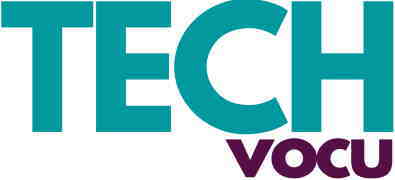University of Phoenix defines design thinking as “a process for solving business challenges that centers on the intuitive experience of the end user.” The business challenge in question can range from launching a new product to designing business management strategies to improving teaching styles. Likewise, the end users or stakeholders could be customers, employees, students or anyone intended to benefit from the solution.
By prioritizing and analyzing the end user’s experience, teams using design thinking can make improvements to their product or service over time. Here, we’ll explore the six phases of design thinking and its numerous potential applications.
The Six Steps of the Design Thinking Process
The design thinking process involves six key phases: empathize, define, ideate, prototype, test and implement. Each step leads to the next, and as design thinking is an iterative process, it may be necessary to revisit earlier steps following the results of those further down the line. The process is cyclical, and the final implementation can produce user insights leading back to step one.
1. Empathize
The first step in the process is to gather user insights. An empathetic approach is crucial in this research phase, as truly understanding a user’s experience forms the basis of the following steps. Through research in the form of direct customer input, end user observation or aggregated data, the design team might ask questions relating to their product or service such as:
- What are end users saying, thinking and feeling?
- What do they like or dislike?
- What difficulties or obstacles are they experiencing?
2. Define
Step two derives critical insights from the results of empathetic research to define the next steps the team must take. During the definition phase, the design team should seek to distill feedback into one or multiple problem statements to address later in the process. They might do this by answering questions like:
- Are any patterns emerging in the end user experience? For example, are several different users experiencing the same problem or obstacle?
- What could be the origins of these patterns or issues?
3. Ideate
Ideation is the idea generation phase of the process, when a design team will produce as many ideas as possible to address the problem statements derived from step two. Some questions to address in this phase are:
- How could we resolve this problem statement if resources, time or finances were no obstacle?
- Are there any biases that went unrecognized earlier in the design process?
- What might the end user response be to the proposed solution?
Through this phase, the design team may produce several workable solutions to take into the next step.
4. Prototype
In step four, the design team creates a prototype of the problem statement solution generated in the ideate phase. Some important questions to keep in mind during this step include:
- Would it be possible to reproduce this solution at the necessary scale?
- Are there any limitations to the current prototype?
- What impact would this solution have if deployed?
5. Test
In this step, the design team tests the prototype solution, gathering data from users in a research process that may resemble step one. Researchers should ask:
- Is there a perceptible change in how end users feel about the new solution compared to the old version?
- Does the prototype address the problem it set out to solve?
- Does the prototype unintentionally solve or create other problems?
If the answers to these questions are not satisfactory or if they flag up further issues, the design team may need to revisit a preceding step or go back to step one.
6. Implement
If a prototype survives the testing phase and addresses the problem statement, it awaits implementation after any necessary refinement.
Data and insights may still arise after this step, and the design team should continue to address this information to improve the end user experience. Through the six steps of the design thinking process, not only will users enjoy a product or service built to their specific needs, but the design team will have generated insights into the process that could prove useful in the future.
The Applications of Design Thinking
There is no limit to who could employ the design thinking process. Often used in product improvement, many organizations can also benefit from design thinking. In the corporate world, this approach substitutes end-point consumers for company employees. Managers might utilize the process to tailor learning and development programming to secure best working practices.
Design thinking also has valuable applications in education. Faculty may find that applying design thinking to curriculums or lesson plans could produce better outcomes for students. It could even mean nurturing empowered, problem-solving pupils who feel their input has value and can make a difference.
Finally, individuals can harness the power of design thinking to enhance their own lives. From focusing on the subjectivity of individual experiences and being open to feedback from others to being ready to revise an approach or mindset that could lead to innovative problem solving, this flexible, six-step process can provide new pathways to better end user experiences everywhere.
For prospective students interested in design thinking and other business strategies, University of Phoenix offers an array of business-related, online degrees.
About University of Phoenix
University of Phoenix is dedicated to advancing adult and nontraditional learners’ educational aims and to helping students navigate the career options and degree programs that best suit them. The University offers degree programs aligned to in-demand career paths including paths in business, cybersecurity and nursing. The University also provides flexible start dates, online classes and numerous scholarship opportunities to make it possible for anyone to earn the degree they need.
Additionally, University of Phoenix’s Career Services for Life® commitment to active students and graduates provides the resources needed to be prepared when searching for work for no additional charge. These services include education and networking opportunities, resume and interview support and career guidance. To learn more, visit www.phoenix.edu.
